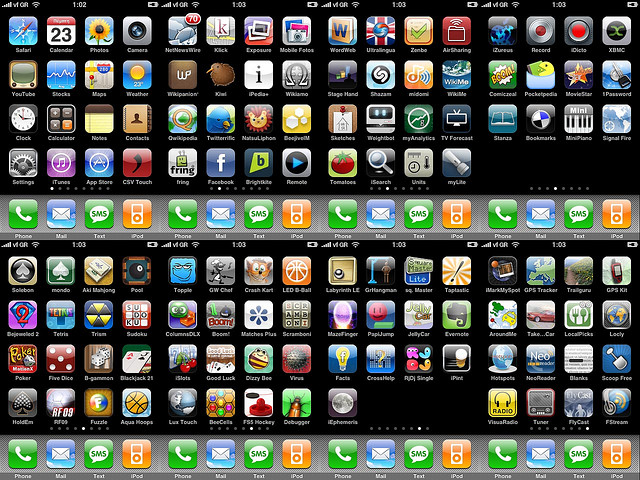On June 2, the U.S. Environmental Protection Agency (EPA) proposed a new Clean Power Plan, in which the agency will apply its authority under the Clean Air Act (CAA) to dramatically reduce greenhouse gas (GHG) emissions from fossil fuel-fired electric generating units (EGUs). EPA calculates that these power plants account for roughly one-third of all domestic GHG emissions in the US. Advocates on opposite sides of this controversial proposal claim this Plan would either become the most important US initiative to address climate change, and/or would crash economies through much of the US heartland by strangling coal-fired electricity production. Let’s hope we end up closer to the optimistic scenario!
Audit, Compliance and Risk Blog
Tags: Corporate Governance, Business & Legal, Health & Safety, Environmental risks, Environmental, EPA, Greenhouse Gas, ghg
Vehicle Maintenance: Mobile Apps Making Life Easier
Posted by STP Editorial Team on Mon, May 26, 2014
Mobile technology is changing our lives, including how we drive and maintain our vehicles, where we get gas and how much we pay for it, to which route we take to work every day. There are apps to record your service history and even ones designed to help you complete simple car fixes on your own. Below are examples of some useful vehicle maintenance and repair apps for businesses and individuals.
Tags: Business & Legal, Employer Best Practices, Health & Safety, Training, Transportation
OSHA 29 CFR 1910.1200: A MUST for Employers That Use Hazardous Chemicals
Posted by STP Editorial Team on Mon, May 12, 2014
Employers that have hazardous chemicals in their workplaces are required by OSHA’s Hazard Communication Standard (HCS), 29 CFR 1910.1200, to implement a hazard communication program. The program must include labels on containers of hazardous chemicals, safety data sheets (SDSs) for hazardous chemicals, and training for workers, and the employer must describe in a written program how it will meet the requirements of the HCS in each of these areas. Employers can implement an effective hazard communication program by following these six steps: learn the standard and identify responsible staff; prepare and implement a written hazard communication program; ensure containers are labeled; maintain Safety Data Sheets (SDSs); inform and train employees; and evaluate and reassess your program.
Tags: Business & Legal, Employer Best Practices, Health & Safety, Environmental risks, Environmental, EHS, Hazcom
Supreme Court Reinstates EPA Interstate Regulation of Upwind Air Emissions
Posted by Jon Elliott on Wed, May 07, 2014
On April 29 the US Supreme Court reversed a lower court decision, reinstating US Environmental Protection Agency (EPA) rules requiring states to control emissions of air pollutants that contaminate downwind states (EPA v. EME Homer City Generation, LP). The Cross-State Air Pollution Rule (CASPR, or the “Transport Rule”) implements “Good Neighbor” provisions in the Clean Air Act (CAA) designed to ensure that upwind states’ emissions don’t prevent a downwind state from meeting air quality standards. This ruling frees EPA to implement rules requiring tighter emission controls on pollutant sources in upwind states.
Tags: Business & Legal, Health & Safety, Environmental risks, Environmental, EHS, climate change, Transportation
On April 11, the D.C. Circuit Court of Appeals denied a petition by SeaWorld, which was seeking to overturn a citation and penalty issued by the Occupational Safety and Health Administration (OSHA) after a killer whale mauled and drowned one of the park’s trainers during a show (Seaworld of Florida, LLC v. Perez). OSHA had cited SeaWorld for violating the OSH Act’s Employer’s General Duty Clause, by failing to provide a workplace free of “free from recognized hazards that are causing or are likely to cause death or serious physical harm.” This decision reminds us that this often-neglected element of OSH compliance serves important worker safety goals.
Tags: Business & Legal, Employer Best Practices, Health & Safety, OSHA, Employee Rights, Environmental risks, EHS
Workers’ Compensation in California: What If You Get Hurt on the Job?
Posted by STP Editorial Team on Mon, Apr 14, 2014
The workers’ compensation system is based on a trade-off between employers and employees. Employees are entitled to receive prompt, effective medical treatment for on-the-job injuries or illnesses no matter who is at fault and, in return, are therefore prevented from suing employers over those injuries. As a result, California employers, as in other states, are required by law to have workers’ compensation insurance, even if they have only one employee. And, if employees get hurt or sick because of work, the employer is required to pay for workers’ compensation benefits. Workers’ comp insurance provides six basic benefits: medical care, temporary disability benefits, permanent disability benefits, supplemental job displacement benefits, or vocational rehabilitation and death benefits.
Tags: Corporate Governance, Business & Legal, Employer Best Practices, Health & Safety, Employee Rights, California Legislation, EHS, Disability benefits
Environmental Compliance: Santa Barbara Yearly Regulatory Measures
Posted by STP Editorial Team on Mon, Mar 31, 2014
State law requires the Santa Barbara County Air Pollution Control District to publish a list each year of regulatory measures that may be considered for adoption or amendment during the upcoming calendar year. The District posted its list for 2014 on January 5, 2014, which can be seen below. Before adopting or amending any regulation, the District publishes a notice in a local newspaper and holds a hearing to accept comments from affected businesses and other interested parties.
Tags: Health & Safety, California Legislation, Environmental risks, Environmental, EHS, Greenhouse Gas, ghg, mact, Santa Barbara
U.S. Transportation Safety—A Drug and Alcohol Clearinghouse?
Posted by STP Editorial Team on Wed, Mar 26, 2014
In an effort to reduce “significant risk to public safety,” the U.S. Department of Transportation (DOT) now proposes to establish a new Commercial Driver’s License Drug and Alcohol Clearinghouse for drug and alcohol test results for drivers operating under a commercial driver’s license (CDL). The clearinghouse would also track traffic citations for driving while under the influence of alcohol or drugs (DUIs).
Tags: Business & Legal, Employer Best Practices, Health & Safety, Employee Rights, Training, EHS, Transportation
We’re still a long way from the paperless office, but the paperless cab may be upon us. The Federal Motor Carrier Safety Administration (FMCSA) recently adopted a new rule that requires drivers of interstate commercial buses and trucks to record their hours using electronic logging devices (ELDs). According to the administration, widespread use of these devices, also known as electronic onboard recorders, will reduce hours-of-service violations by hampering efforts to misrepresent time put in on the job—and that reduction will result in fewer crashes and fatalities.
Tags: Corporate Governance, Business & Legal, Employer Best Practices, Health & Safety, Employee Rights, Training, EHS, Transportation
Changes to California Carcinogen and Reproductive Toxin Lists
Posted by STP Editorial Team on Wed, Mar 19, 2014
The Office of Environmental Health Hazard Assessment (OEHHA) has made a number of changes to the list of chemicals known to the State of California to cause cancer or reproductive toxicity for purposes of the Safe Drinking Water and Toxic Enforcement Act of 1986 (Proposition 65).
Tags: Health & Safety, California Legislation, Environmental risks, Environmental, EHS, EPA, Hazcom










